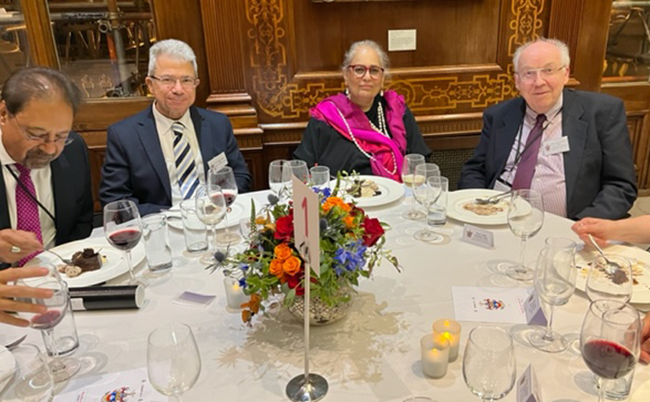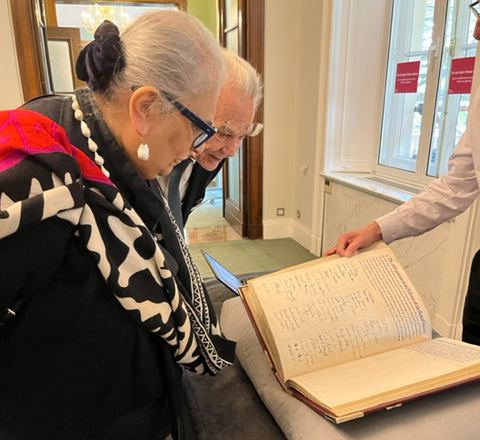
Parminder Bhachu, professor of sociology, was an invited speaker at “Tejinder at 70,” a celebration at the Royal Society of the life and work of Sir Tejinder Virdee. Virdee is the subject of a chapter in her latest book, “Movers and Makers,” which details how mover-maker capital — artisanal and craft skills originating from and honed through movement across international borders — is translated into cutting-edge new world cultural and technical capital.

In her presentation, “Tejinder’s Origins: The Impact of Cultural Inheritances, Education, and Migration,” Bhachu discussed Virdee’s technically sophisticated background, which includes multiple migrations, and the ancient and more recent craft background that produced him. His inheritances — of movement, technical skills, and hyper levels of daring innovation — have contributed to the highest levels of science and technology.
Virdee originated the concept and oversaw the construction of the Compact Muon Solenoid (CMS) experiment within the CERN Large Hadron Collider, which resulted in the discovery of the Higgs boson, often referred to as “the God particle.”
Bhachu shared the Oct. 14 program with leading particle physicists and Royal Society fellows, as well as representatives of CERN, the European Organization for Nuclear Research, which operates the largest particle physics laboratory in the world. Established in 1954, it is based in a northwestern suburb of Geneva, on the France–Switzerland border.


